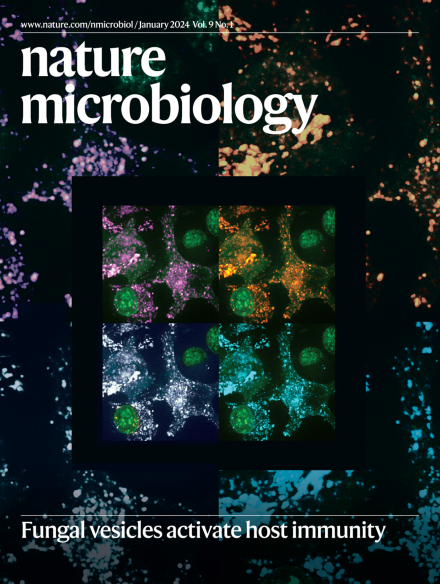HIV infection reprogrammes CD4+ T cells for quiescence and entry into proviral latency
IF 19.4
1区 生物学
Q1 MICROBIOLOGY
引用次数: 0
Abstract
Human immunodeficiency virus (HIV) persists in infected individuals despite effective antiretroviral therapy due to the rapid establishment of latent reservoirs, mainly composed of quiescent memory CD4+ T cells. The mechanisms governing latent reservoir formation remain poorly understood. Here, using single-cell RNA-seq and functional studies in human primary CD4+ T cell models, we show that HIV infection with reporter constructs and laboratory and patient-derived strains triggers transcriptomic remodelling, activating the p53 pathway and a quiescence programme mediated by Krüppel-like factor 2 (KLF2), a key quiescence regulator. Loss- and gain-of-function studies, including unbiased shRNA screens and confirmatory studies in CD4+ T cells from HIV+ donors, demonstrate that HIV infection drives KLF2 and p53 signalling, which downregulate MYC and proliferation pathways, resulting in proviral transcriptional silencing. This enhances latent reservoir formation in T cells, ensuring viral persistence. These findings present a mechanism for forming the latent HIV reservoir and broaden the repertoire of strategies through which viruses control host cells to their advantage. HIV infection triggers transcriptomic remodelling and a quiescence programme via KLF2 and the p53 pathway leading to proviral silencing.

HIV感染重新编程CD4+ T细胞使其静止并进入前病毒潜伏期。
尽管抗逆转录病毒治疗有效,但人类免疫缺陷病毒(HIV)仍在感染者体内持续存在,这是由于潜伏库的迅速建立,主要由静止记忆CD4+ T细胞组成。控制潜在储层形成的机制仍然知之甚少。在这里,我们使用单细胞RNA-seq和人类原代CD4+ T细胞模型的功能研究表明,报告构建株、实验室株和患者衍生株的HIV感染触发转录组重塑,激活p53通路和由关键的静止调节因子kr ppel样因子2 (KLF2)介导的静止程序。功能丧失和功能获得研究,包括无偏倚shRNA筛选和来自HIV+供体的CD4+ T细胞的验证性研究,表明HIV感染驱动KLF2和p53信号传导,从而下调MYC和增殖途径,导致前转录沉默。这增强了T细胞中潜伏库的形成,确保了病毒的持久性。这些发现提出了一种形成潜伏HIV病毒库的机制,并拓宽了病毒控制宿主细胞的策略。
本文章由计算机程序翻译,如有差异,请以英文原文为准。
求助全文
约1分钟内获得全文
求助全文
来源期刊

Nature Microbiology
Immunology and Microbiology-Microbiology
CiteScore
44.40
自引率
1.10%
发文量
226
期刊介绍:
Nature Microbiology aims to cover a comprehensive range of topics related to microorganisms. This includes:
Evolution: The journal is interested in exploring the evolutionary aspects of microorganisms. This may include research on their genetic diversity, adaptation, and speciation over time.
Physiology and cell biology: Nature Microbiology seeks to understand the functions and characteristics of microorganisms at the cellular and physiological levels. This may involve studying their metabolism, growth patterns, and cellular processes.
Interactions: The journal focuses on the interactions microorganisms have with each other, as well as their interactions with hosts or the environment. This encompasses investigations into microbial communities, symbiotic relationships, and microbial responses to different environments.
Societal significance: Nature Microbiology recognizes the societal impact of microorganisms and welcomes studies that explore their practical applications. This may include research on microbial diseases, biotechnology, or environmental remediation.
In summary, Nature Microbiology is interested in research related to the evolution, physiology and cell biology of microorganisms, their interactions, and their societal relevance.
 求助内容:
求助内容: 应助结果提醒方式:
应助结果提醒方式:


